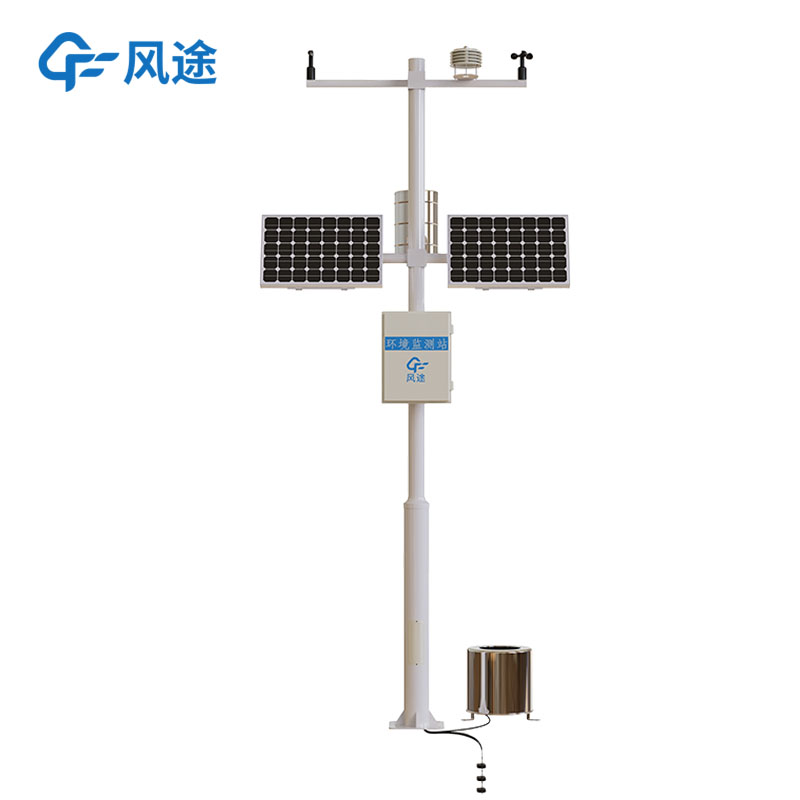In the vast farmlands, the small - climate monitoring equipment, namely Agricultural Weather Stations, is indeed transforming the way farmers produce and has become an extremely crucial tool in agricultural production. The observation tasks it undertakes provide comprehensive data support for agricultural production.
Meteorological Element Observations
Temperature and Humidity: They accurately measure air temperature and humidity, two elements that have a significant impact on crop growth. For example, different crops have specific requirements for temperature and humidity at different growth stages. High - temperature and drought may cause crops to lose water too quickly, affecting photosynthesis and nutrient transport. On the other hand, a high - humidity environment may lead to the breeding of pests and diseases. By grasping the temperature and humidity data in real - time, farmers can take timely measures such as irrigation and ventilation to adjust the micro - climate of the farmland.
Light Intensity: Light is the energy source for plants to carry out photosynthesis. Agricultural Weather Stations can accurately monitor light intensity. Farmers can reasonably arrange the planting density and variety layout according to the light requirements of crops. For instance, light - loving crops need sufficient light, while some shade - tolerant crops can grow well under weaker light.
Wind Speed and Direction: Wind speed and direction not only affect the heat and water exchange in the farmland but also are related to the spread of pests and diseases. Strong winds may damage crops, and gales may even cause soil wind erosion. At the same time, pests and diseases may spread with the wind. Mastering the wind direction helps farmers prepare in advance for pest and disease prevention and control.
Rainfall: Precipitation is directly related to the water supply for crops. Both excessive and insufficient precipitation are not conducive to crop growth. By monitoring rainfall, farmers can rationally arrange irrigation, replenish water in a timely manner during drought, and do a good job in drainage and flood prevention when there is too much precipitation.
Atmospheric Pressure: Changes in atmospheric pressure are closely related to the movement of weather systems. A drop in air pressure may indicate that rainfall or storms are approaching. Farmers can take protective measures in advance based on this to protect crops and agricultural facilities.
Soil Element Observations
Soil Temperature: Soil temperature affects seed germination, root growth, and soil microbial activities. Different crops have different requirements for soil temperature at different growth stages. By monitoring soil temperature, farmers can determine the best sowing time and irrigation opportunity.
Soil Moisture: Accurately grasping soil moisture allows farmers to irrigate reasonably, avoiding water resource waste and soil compaction. Appropriate soil moisture helps crop roots absorb water and nutrients, promoting the healthy growth of crops.
Other Observation Elements
CO₂ Concentration: CO₂ is an important raw material for plant photosynthesis. Monitoring the CO₂ concentration in the farmland helps farmers understand the photosynthesis efficiency of crops. When necessary, measures such as ventilation can be taken to adjust the CO₂ concentration to increase crop yields.
Ultraviolet Radiation: Appropriate ultraviolet radiation is beneficial to crops, but excessive radiation may cause damage. The monitoring of ultraviolet radiation by Agricultural Weather Stations can help farmers take corresponding protective measures, such as using sun - shading nets, to protect crops from ultraviolet damage.
With the help of these rich observation data, farmers can be aware of the approaching of extreme weather such as high - temperature and heavy - rain in advance and then take timely protective measures. They can accurately judge the soil moisture content, rationally carry out irrigation and fertilization, and also promptly detect problems such as crop pests, diseases, and nutrient deficiencies.
Agricultural Weather Stations also have an intelligent early - warning function. Through the analysis of monitoring data, it can predict the occurrence risks of pests and diseases as well as meteorological disasters such as frost, drought, and flood in advance, reserving sufficient response time for farmers.
Farmers optimize the planting layout based on data such as light and temperature, reasonably arrange farming activities such as sowing, irrigation, fertilization, and harvesting, and regulate the environment in the greenhouse facilities to create the best growth environment for crops.
Agricultural Weather Stations can automatically record data and generate summary data and graphs for farmers to view at any time. These historical data not only help farmers summarize production experience but also provide strong data support for agricultural scientific research.

Article address:https://www.sqqx.net/en/news/537.html

 +86 15898932201
+86 15898932201



